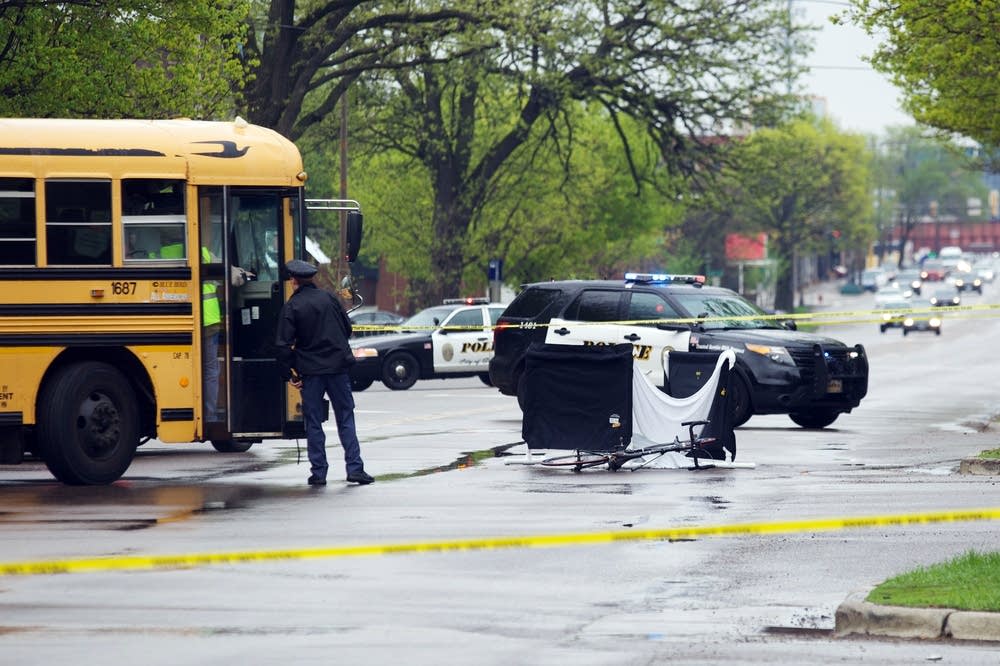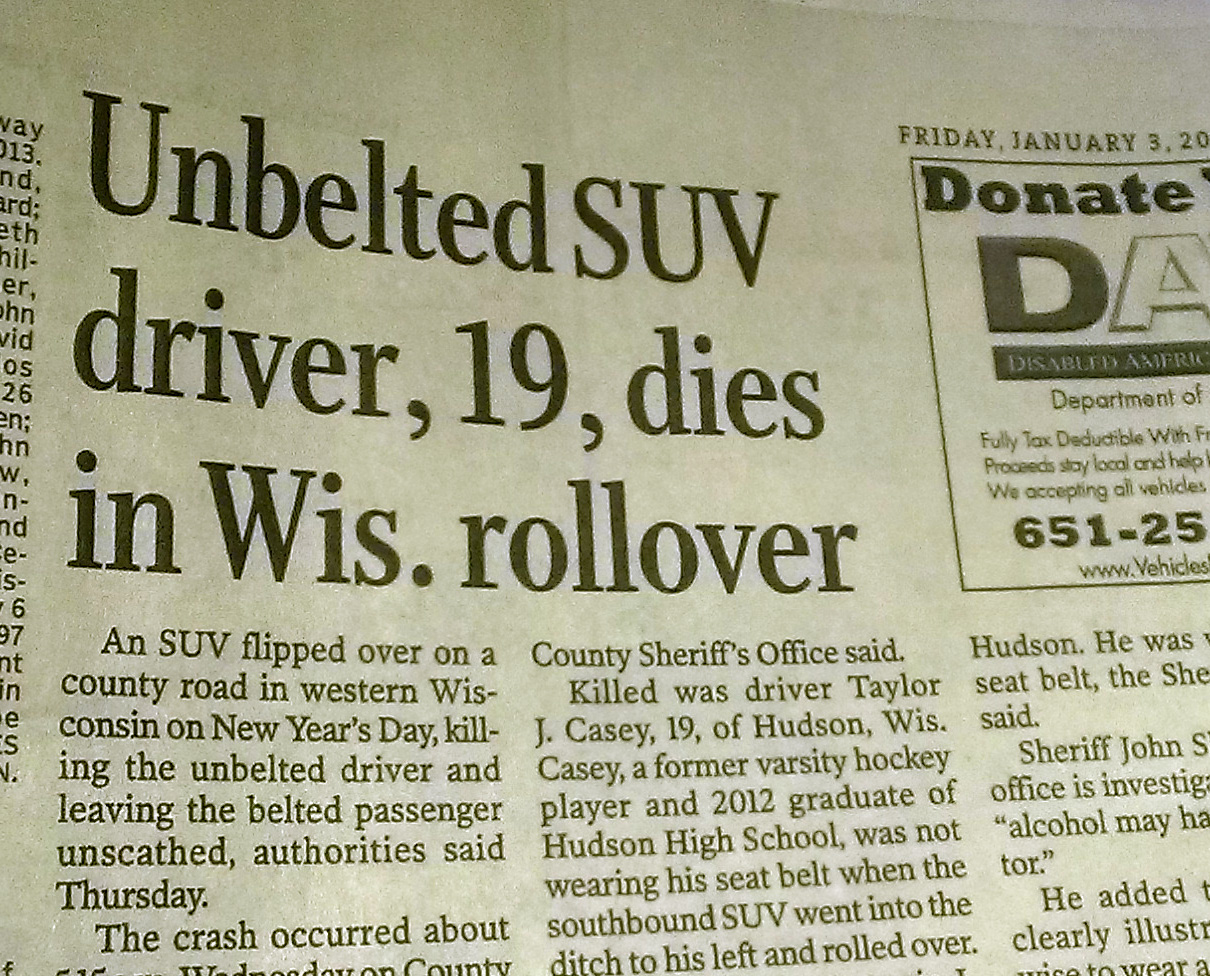
Long-time readers of NewsCut might recognize that I’ve long been troubled by the inclination of journalists writing about car crashes to pause for a public service announcement in an otherwise tragic story about a death: whether the person was wearing a seat belt.
This is a fairly typical headline. This one appeared in October 2016.

It carried a certain “serves ’em right” mentality that seems inappropriate. Would a seat belt have saved that person’s life. Nope. And we know that because a week later the authorities revealed that the man in that story was wearing a seat belt.
Yesterday, a cyclist in St. Paul died when he was struck head on by a bus driver making a turn.
Any driver knows that the vehicle making the turn yields the right of way to oncoming traffic.
So why the focus on the cyclist wearing a helmet? And how might the stories be different today if the answer was “no”? What exactly is the point of the question and the urge to establish that if a bicyclist dies, it must have been his/her own fault?
Julie Kosbab, writing on Streets.MN today, says it’s the wrong question.
If you are hit by a flat-front bus, accelerating through a left turn, a helmet is the least of your worries as a cyclist. You are not going to die from the head wound. You are going to die of blunt force and internal injuries to your torso.
It doesn’t take experience in trauma, in collision science, or even a passing grade in high school physics to realize this.
A recent study by the Insurance Institute for Highway Safety found that SUVs, with high-riding style, flat front ends, and higher total horsepower are likely to strike higher on the bodies of pedestrians and cyclists — at the chest rather than in the legs — and strike with more force. And they’re smaller than these buses!
So what are the right questions to ask? Well, here are some ideas:
- “Was the bus driver the regular operator for this route?”
- “Do the signals at this intersection have a Leading Pedestrian Interval, to allow pedestrians and cyclists to start crossing before motorists get a green?”
- “Do the east and westbound signals change simultaneously, or are there timing gaps to allow turns to occur?”
- “Was the bus coming from the service drive, or the main through lanes?”
- “Was the cyclist riding the service drive, or the main through lanes?”
- “Are we aware of anything that could have blocked the bus driver’s view of the cyclist?”
- “What were the injuries to the cyclist, per paramedics at the scene?”
Bike helmets are a good idea, mostly, even if there’s some evidence that helmets can make it more likely you’ll be involved in an accident, but not because of the actions of the cyclist; because of the attitude of the vehicle’s driver.
They usually escape inspection.
On Monday afternoon, for example, Linnea Rice, 45, of Onalaska, Wis., was pinned underneath the car that hit her when she was stopped at a traffic light, doing nothing wrong. “Rice, who wasn’t wearing a helmet according to the sheriff’s office, went by ambulance to Mayo Clinic Health System in La Crosse,” WXOW reported.
